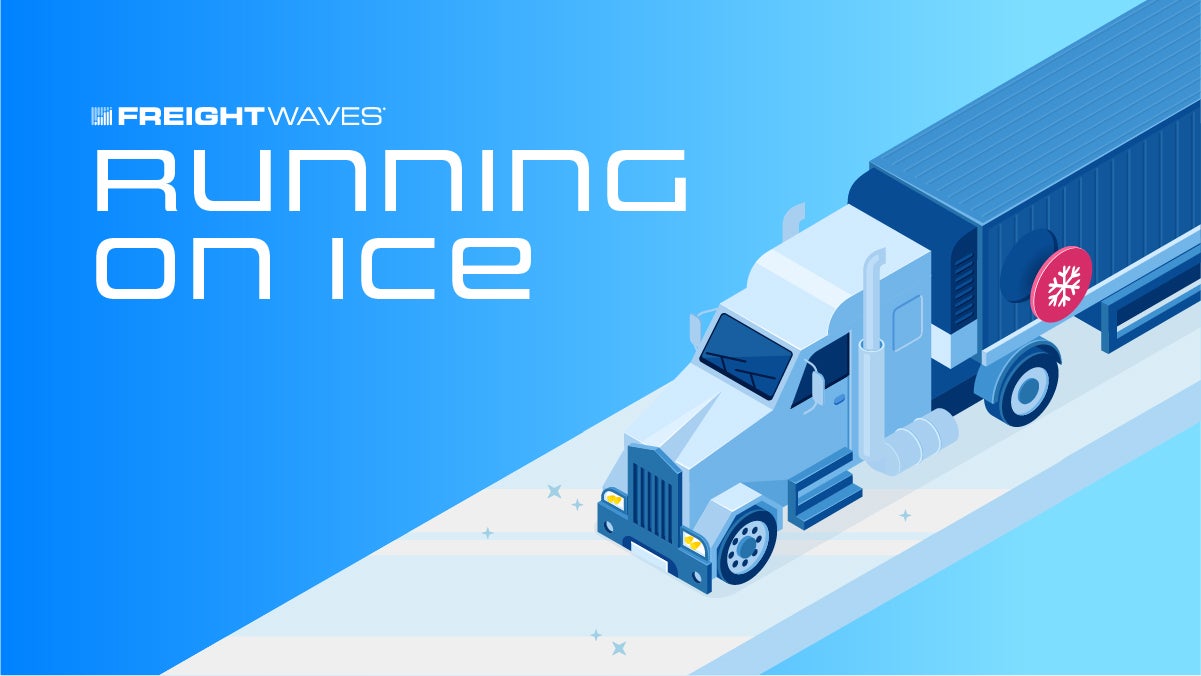Your latest info on all things cold chain
Hello, and welcome to the coolest community in freight! Here you’ll find the latest information on warehouse news, tech developments and all things reefer madness-related. I’m your controller of the thermostat, Mary O’Connell. Thanks for having me!
All thawed out

Hollywood having just wrapped their award season and the iconic looks that are still circulating all over the internet, it raises the question: What happens to those outfits? Surely the infamous meat dress from Lady Gaga isn’t sitting in her closet. I’m 99% certain it’s not. Neither are a majority of the other looks worn by her or any other celebrity.
Some things end up in a designer’s showroom. More and more, though, these pieces or art are being stored in temperature-controlled facilities. Julie Ann Clauss founded the Wardrobe, a fashion archival service. This preservation is more than putting a garment in a bag, sticking it on a hanger and storing it in a warehouse. Clauss is at a museum-grade level of preservation.
In an age when sustainability is key and fast fashion is one of the leading pollutants, having a way to preserve collections is key. According to Steven Vargas’ article in the Los Angeles Times, one of Clauss’ clients, Rachel Zoe, has been collecting fashion pieces for about 20 years. “I put a lot of precious historical designer pieces that I don’t necessarily wear that often, that I would never part with and really fear will get damaged over time,” Zoe said. While not everyone sees fashion as art, it’s still a crucial part of history.
Temperature checks

Foodservice distributor Sysco Corp. has announced plans for an electric vehicle hub in California. Sysco set a goal to reduce direct operational emissions by 27.5% by 2030. Sysco wants to add 2,800 electric trucks to its fleet over the next seven years. The company already operates 11 Freightliner eCascadia tractors at its Riverside, California, facility, where 20 charging stations have been installed.
Once the hub is completed, the planned electric vehicle infrastructure at the facility is expected to have 40 dual-port DC fast-charging stations, 40 electric Class 8 trucks and 40 electric refrigerated trailers. To accommodate the energy demands of the company’s fleet, the Riverside site also is expected to have 4 megawatts of battery storage and to increase its solar power generation by an additional 1.5 megawatts.
Sysco has to be cashing in on the Internal Revenue Service’s tax credit for new electric vehicles. Not only that but California is pushing for more renewable energy generation at facilities.
Food and drugs

The last hope for freight volumes comes in the form of the 100 days of summer and grilling season. Grocers are preparing for the anticipated rise of snacks and various proteins as the holidays that kick off the summer come around. Cinco de Mayo, a holiday that commemorates Mexico’s victory over the French army in 1862, brings increased sales of salsa, tortilla chips, tequila and meat as consumers celebrate.
Mother’s Day brings foot traffic back to restaurants as brunch is seemingly the No. 1 activity for moms on their special day, meaning increased volumes for restaurant suppliers and florists alike. Rounding out the month of May is none other than everyone’s favorite three-day weekend, Memorial Day, the official start of the 100 days of summer and the unofficial start of the grilling season. Meat processors have begun filling orders for ribs, burgers, pork chops, etc.
Beef prices are still inflated but to the happiness of many shoppers ground beef prices were down nearly 12% from last year. The average American could pick up a pound of ground beef for about $3.98 discounted. Steaks such as ribeye are up $1.53 per pound from last year. While beef is still the leader of the protein pack, compared to chicken, pork and seafood, the segment is still down overall.
Cold chain lanes

This week’s market is none other than Spokane, Washington. The home of the world’s largest basketball tournament has brought another slam dunk in the way of reefer outbound tender rejections. Rejections in Spokane have been quite volatile for the past few weeks, yo-yoing between 5% and 27%. Big swings are infinitely harder to predict and accommodate. Typically the index over 7%-10% rejections indicate an inflationary spot market, while anything above 10% signals tight capacity. Spokane might not have seen the sharp increase in spot rates due to its market size, but expect rates to be higher there than most of the other reefer markets in the U.S.
Is SONAR for you? Check it out with a demo!
Shelf life
Wendy’s chili is coming to grocery stores
Inland ports offer cold chain efficiencies
Tyson’s Nebraska pork processing plant remains dark indefinitely after fire
Global smart container market is projected to reach $9.7 billion by 2027
DOT: ‘Confounding factors’ hindering safety analysis of ELD mandate
Wanna chat in the cooler? Shoot me an email with comments, questions or story ideas at moconnell@freightwaves.com.
See you on the internet.
Mary
If this newsletter was forwarded to you, you must be pretty chill. Join the coolest community in freight and subscribe for more at freightwaves.com/subscribe.











